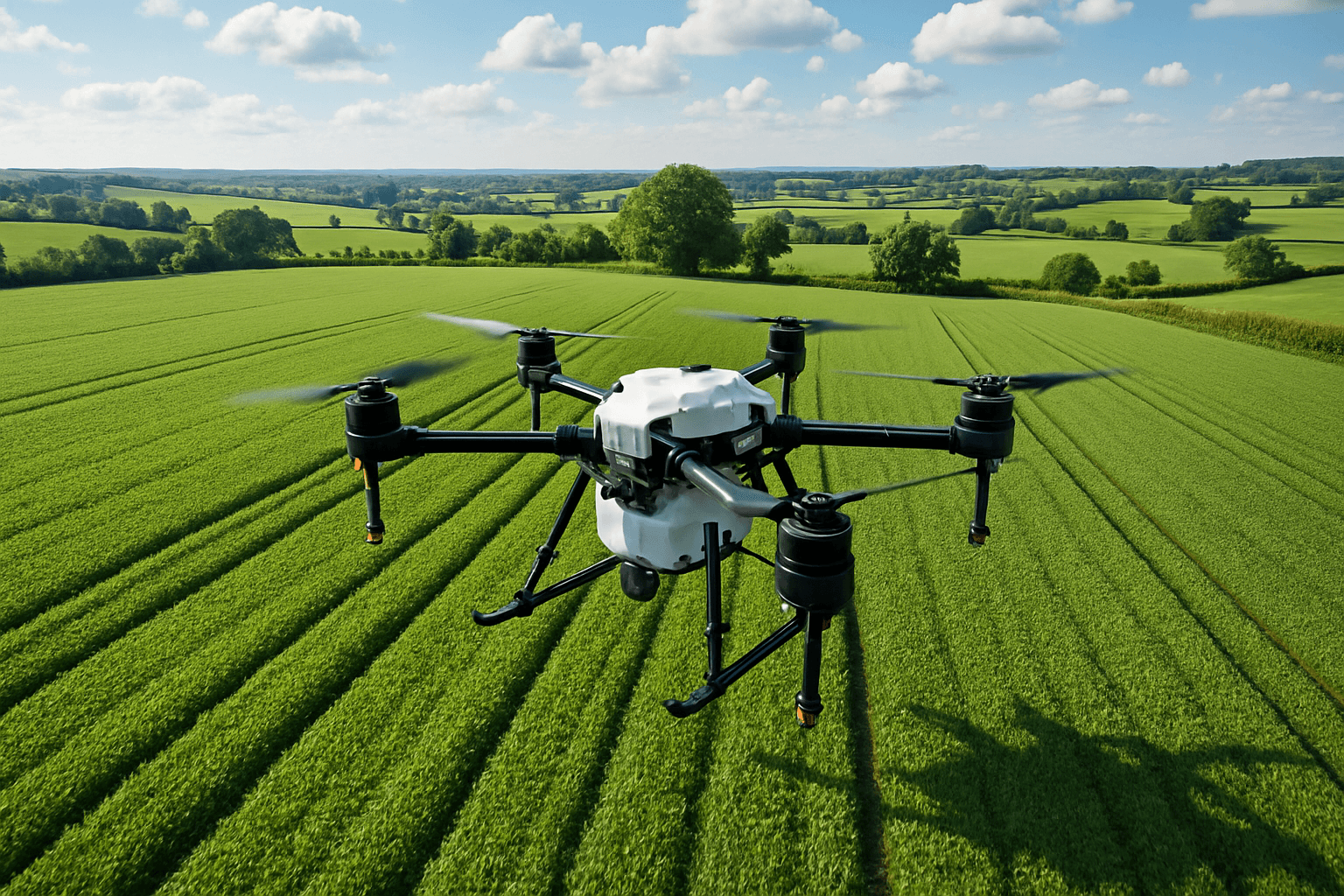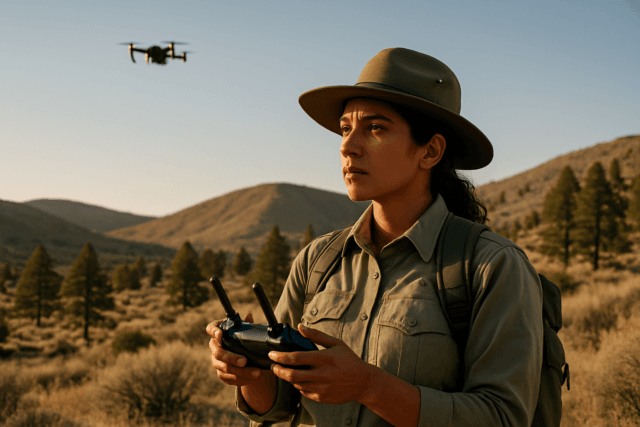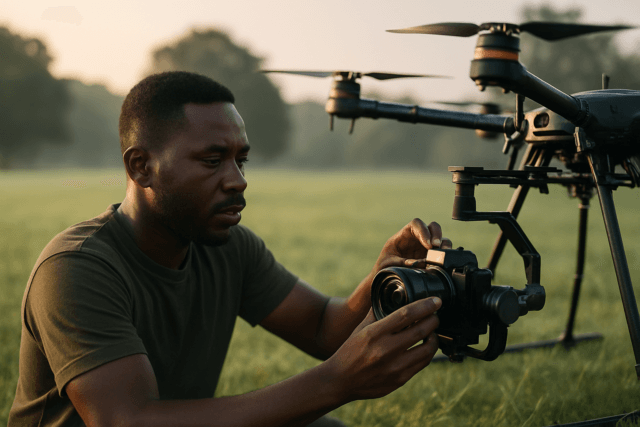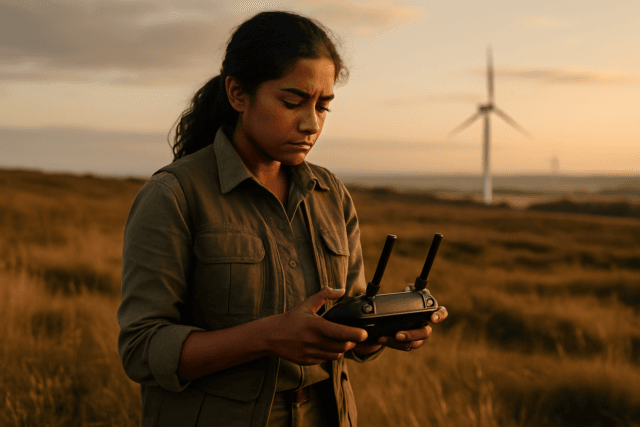Agricultural drones are transforming UK farming, offering innovative solutions for increased efficiency, precision, and sustainability. From crop monitoring to targeted spraying, these unmanned aerial vehicles (UAVs) are becoming indispensable tools for modern farmers. This article explores the diverse applications of drones in agriculture, their benefits and challenges, and the regulations governing their use in the UK.
What are Agricultural Drones?
An agricultural drone is an unmanned aerial vehicle (UAV) designed for use in farming. These drones assist with various tasks such as crop monitoring, spraying, mapping, and data collection to support precision agriculture practices. They provide farmers with valuable insights into crop health, growth stages, and soil variations, enabling them to make informed decisions and optimize their operations.
How Drones are Used in Agriculture
Drones are used in agriculture to collect data, manage crops, and perform key tasks more efficiently than traditional methods. Here are some common applications:
- Crop Monitoring: Drones equipped with visual, thermal, multispectral, or hyperspectral sensors can collect crop health data to identify stress, pests, disease, and nutrient deficiencies. This allows farmers to detect problems early and take timely action.
- Mapping and Surveying: Drones can create high-resolution field maps used for planning, analysis, and documentation. These maps help farmers understand field topography, drainage patterns, and soil variations.
- Spraying: Drones specifically designed for aerial application can spray crops with fertilizers, herbicides, or pesticides. This targeted approach reduces agricultural runoff and chemical drift, benefiting nearby crops and the environment.
- Irrigation and Water Stress Management: Drones with thermal or multispectral sensors help spot areas of over- or under-watering, enabling farmers to optimize irrigation practices and conserve water.
- Pest and Disease Detection: Drones allow farmers to spot crop damage from pests, weeds, or diseases early, before symptoms spread or become irreversible. Early detection allows for prompt intervention and prevents widespread damage.
- Variable Rate Application: Drones can apply fertilizers and pesticides at variable rates based on crop needs, optimizing resource use and minimizing environmental impact.
- Livestock Monitoring: Drones can monitor livestock movement and counting, helping farmers keep track of their animals and ensure their well-being.
Benefits of Using Drones in Agriculture
- Improved Efficiency and Productivity: Drones can cover large areas of farmland quickly, saving time and allowing farmers to focus on critical tasks. Agricultural drones can cover up to 500 acres of farmland in a single day, a task that would take weeks using traditional methods. This represents a 90% time saving.
- Data-Driven Decision Making: Drones equipped with high-resolution cameras and advanced sensors capture detailed data that helps farmers make informed decisions. Analyzing this information helps identify issues like crop diseases, irrigation irregularities, or nutrient deficiencies, enabling farmers to take targeted action.
- Cost-Effectiveness: Drones can save costs by optimizing resource use. Data analytics can reduce fertilizer and pesticide use by up to 30%, cutting operational expenses and minimizing environmental impact.
- Enhanced Crop Management: Drones provide real-time insights into crop health and growth patterns, allowing for early disease detection and timely intervention, leading to healthier, higher-quality crops. Early disease detection through drone-based imaging can boost crop yields by 25%.
- Reduced Environmental Impact: By enabling targeted spraying and optimized resource use, drones help reduce agricultural runoff, chemical drift, and air-polluting emissions, benefiting the environment.
- Accessibility: Drones can reach places in fields that are otherwise challenging to access with other application equipment, allowing farmers to seed cover crops during critical windows.
- Soil Health: Drones minimize soil compaction since they don’t require heavy machinery to traverse fields.
- Security: Drones can monitor the far reaches of a farm, ensuring operations are running smoothly and locating equipment being used. Security drones can also be deployed to monitor fencing and perimeters of valuable crops.
Drawbacks of Using Drones in Agriculture
Despite their numerous benefits, drones also present some challenges:
- High Upfront Cost: Many professional agriculture drones cost several thousand pounds, not including sensors, software, or training. Spending roughly $50,000 for a drone may seem like a lot.
- Technical Training Required: Operating drones effectively and interpreting data outputs requires training in both flight and software tools. Farmers must be proficient in drone piloting, data interpretation, and troubleshooting potential technical issues.
- Limited Flight Time: Most multi-rotor drones can only fly for 20–40 minutes, requiring multiple flights or battery swaps to cover large farms.
- Weather Dependency: Drones are sensitive to weather conditions such as wind and rain, which can limit their usability.
- Regulatory Restrictions: Compliance with aviation and privacy regulations can be complex.
- Limited Payload Capacity: Drones have limited payload capacities, requiring multiple flights for large fields, especially when seeding cover crops.
- Risk of Damage or Loss: Drones may experience technical malfunctions or crashes.
Types of Agricultural Drones
- Multi-rotor Drones: These drones are easy to operate and are suitable for a variety of applications, including crop monitoring and aerial photography.
- Fixed-wing Drones: These drones are well-suited for large-scale farming operations, efficiently covering extensive areas in a single flight. Fixed-wing drones tend to handle windy conditions better than multirotor drones.
- Spraying Drones: Equipped with liquid tanks and nozzles, these drones are designed for targeted spraying of fertilizers, herbicides, or pesticides.
Regulations for Drone Use in the UK
In the UK, drone use is regulated by the Civil Aviation Authority (CAA). Key regulations include:
- Registration: Anyone who owns or flies a drone must register with the CAA for the appropriate ID.
- Flyer ID and Operator ID: As the owner and operator of the drone, both an Operator ID and Flyer ID are required.
- Operational Categories: Drones are classified into different categories based on risk, including Open, Specific, and Certified. Most farmers operating drones in open countryside are likely to fall into the Open A3 category.
- Flying Restrictions: Drones can only be flown in areas completely clear of uninvolved persons and may not be flown within 150m horizontally of areas that are used for residential, commercial, industrial, or recreational purposes.
- Altitude Limit: Never go higher than 120m (400ft) from the ground.
- Distance from People and Property: Keep 50m from people and property (150m in built-up or crowded areas).
- Insurance: Third-party liability insurance is required if the drone is being used for any reason other than fun, recreation, sport, or hobby, including work on a farm or estate, or if you are getting paid to take pictures.
Farmers are urged to fully understand the legal implications of drone use and seek training ahead of new regulations.
Best Agricultural Drones
The best drone for agriculture depends on the specific mission:
- DJI Mavic 3M: Best for agricultural mapping, combining an RGB camera with a multispectral camera. It is ideal for conducting high-precision aerial surveys, crop-growth monitoring, and natural resource surveys.
- DJI Agras Series (T40, T30, T25, T50): Equipped with high-precision spraying systems, these automated platforms are highly efficient solutions for crop spraying and seeding operations.
- DJI Matrice 350 RTK: Designed for large-scale farming operations, excelling in precision mapping and detailed crop health assessments.
- Parrot Bluegrass Fields: A specialized agricultural drone made for precision farming, built for field mapping and crop analysis.
- XAG P40: Stands out among agricultural drones with its solid construction and smart features built for professional farming, with the ability to switch between spraying and spreading modes.
Cost of Agricultural Drones and Services
The cost of agricultural drones varies widely:
- Entry-level mapping drones: May cost $2,000–$5,000.
- Advanced spraying drones (e.g., DJI Agras T50): Can exceed $15,000–$20,000 depending on payload and features.
- Agriculture Drone Sprayer: ₹ 5,10,000/Piece.
Agriculture drone pilots offer a range of services, and pricing can vary based on acreage, data resolution, local market rates, and whether pilots offer one-time jobs or seasonal contracts. Custom hire rates for drone spray applications are typically around $16 per acre, and fungicide applications using crop dusters are about $12.50 per acre.
The Future of Drones in UK Agriculture
The global market for drones in agriculture is expected to grow significantly in the coming years, driven by rising demand for precision farming and labor-saving tools. Research estimates that 76,233 drones will be used in the UK by 2030, with over a third of these used in agriculture. The UK government anticipates that by 2030, the country will have 900,000 drones in operation, which would create 650,000 new jobs and contribute £45 billion to the UK economy.
As technology continues to advance, drones have the potential to transform the agricultural sector, making farming more efficient, sustainable, and profitable. With the right support, training, and infrastructure, drones can become a valuable tool for the future of sustainable farming in the UK.





